Vores stæmmer er framtidsdrømme
Our voises carry futur dreams
2025 | large-scale installation | facade and wall-hung works Dyslektiske styrker er frø vi vil så (Dyslexic strengths are seeds we will plant); seating elements Lovforslag: Ordblinde med stolthed (legislative proposal Dyslexics with Pride); sculpture Gummifinger 1 (Elastic finger 1)
Exhibited | Gloria’s foyer Roskilde Festival 2025; GRASP 2025
Visual artist Julie Nymann invites us into an installation where green surrounds us. People who
have difficulties converting sound into words and vice versa are, in the National Danish Dyslexia
Test, labelled with the colour red.
Nymann questions this colour coding, and wonders what it means for our self-understanding when we are categorised with a colour that signals ‘danger’ or ‘warning’?
With green as the dominant colour, Nymann wants to rethink the stigma and prejudices that people with dyslexia may encounter.
Nymann questions this colour coding, and wonders what it means for our self-understanding when we are categorised with a colour that signals ‘danger’ or ‘warning’?
With green as the dominant colour, Nymann wants to rethink the stigma and prejudices that people with dyslexia may encounter.

Installation view at Gloria’s foye Roskilde Festival 2025. photo Frida Gregersen
At the centre of the room rises the four-metre-tall sculptural hand Elastic Finger 1 (2025) in red, with the palm pressing against the ground.
On the surrounding seating, you will find Dyslexics with Pride (2024), an artistic manifesto, written as a Danish legislative proposal.
The proposals call for changing the terms and symbols that authorities and educational institutions use about people with dyslexia, as well as how the school system should be changed to better support dyslexia in literacy education.
One suggestion is to change the Danish term ‘word-blindness’. Other countries use the word dyslexia, and the artist uses this term herself.
On the surrounding seating, you will find Dyslexics with Pride (2024), an artistic manifesto, written as a Danish legislative proposal.
The proposals call for changing the terms and symbols that authorities and educational institutions use about people with dyslexia, as well as how the school system should be changed to better support dyslexia in literacy education.
One suggestion is to change the Danish term ‘word-blindness’. Other countries use the word dyslexia, and the artist uses this term herself.

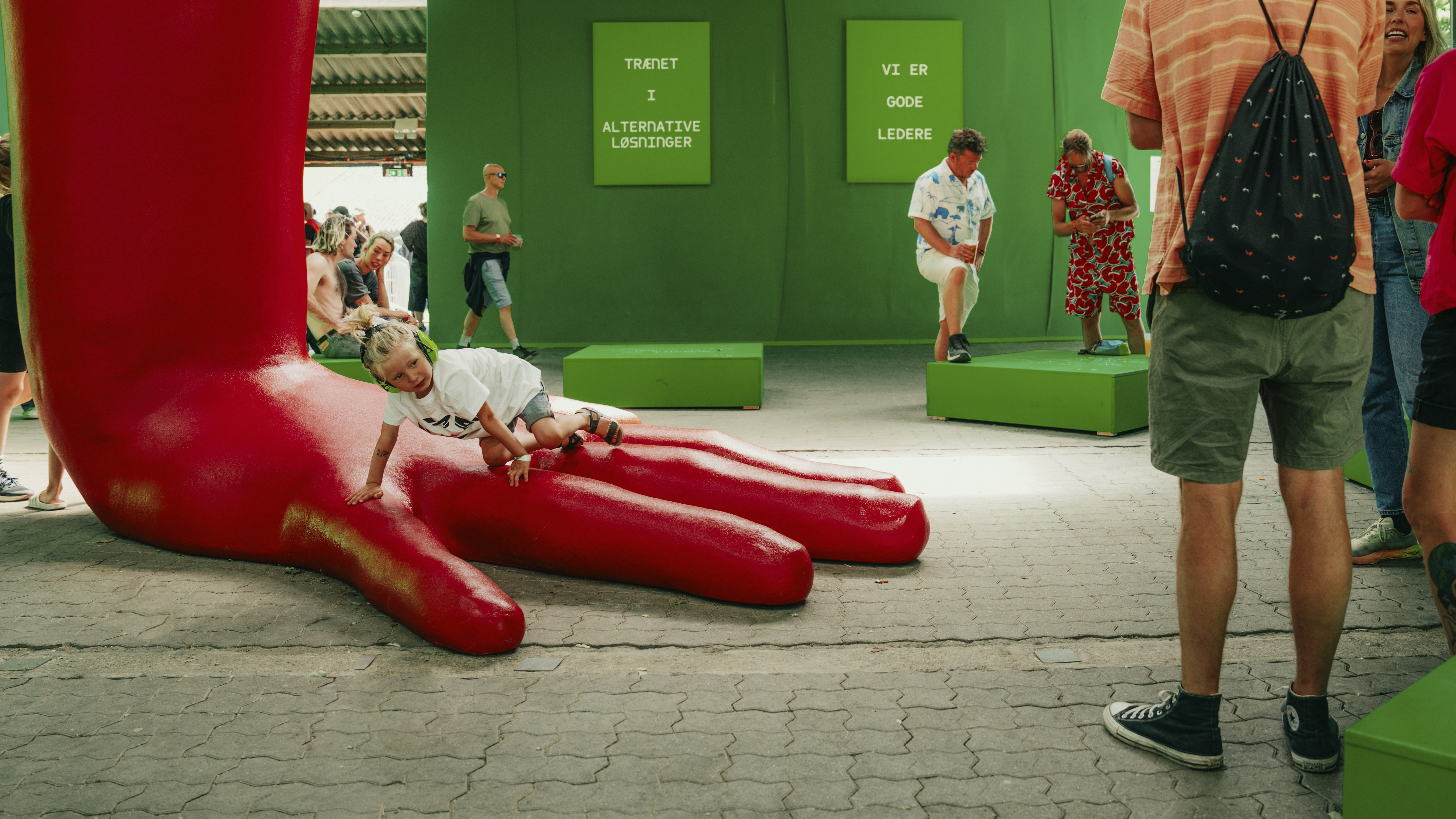
Nymann lives with dyslexia and has asked 80 other people what advantages they see in their
own dyslexia.
The focus on these strengths is expressed in the hanging wall pieces Our Voices Carry Future Dreams (2025).
The voices become a collective expression to recognise the different skills that people with dyslexia can acquire to adapt to a society that is not designed for everyone.
At the same time, there is a collective call for all of us: to walk the green path together, recognising our differences as individuals and embracing the unique strengths they bring. What would happen if we turned it around and instead used a colour that symbolises strength?
The focus on these strengths is expressed in the hanging wall pieces Our Voices Carry Future Dreams (2025).
The voices become a collective expression to recognise the different skills that people with dyslexia can acquire to adapt to a society that is not designed for everyone.
At the same time, there is a collective call for all of us: to walk the green path together, recognising our differences as individuals and embracing the unique strengths they bring. What would happen if we turned it around and instead used a colour that symbolises strength?
“our voices
are dreams of the future
our pride
grows into the green colour
dreams of future a united union.”
Lyrics from the song En Samlet Union by Julie Nymann in collaboration with Agnes Valbjørn Stavnsberg.
are dreams of the future
our pride
grows into the green colour
dreams of future a united union.”
Lyrics from the song En Samlet Union by Julie Nymann in collaboration with Agnes Valbjørn Stavnsberg.
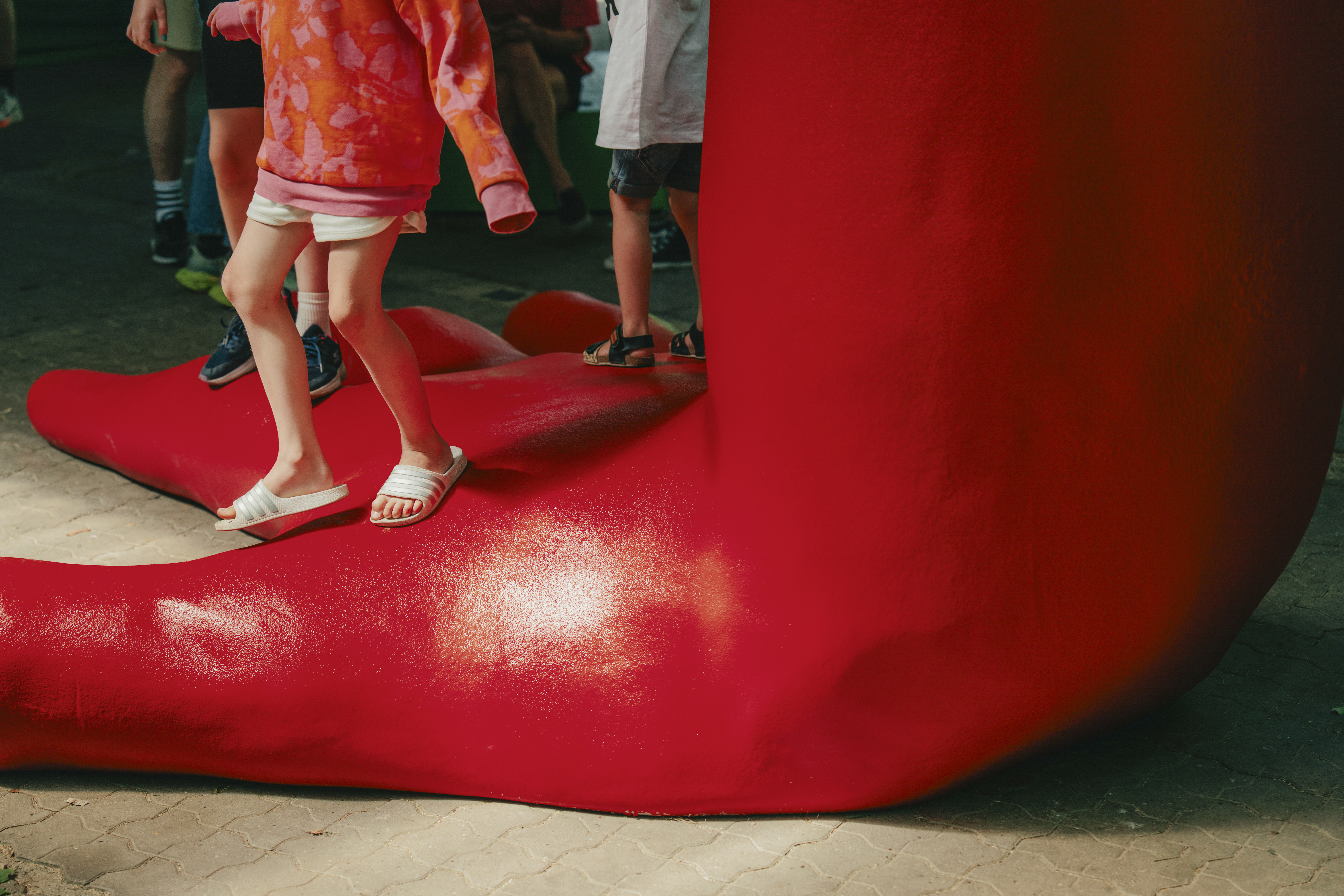

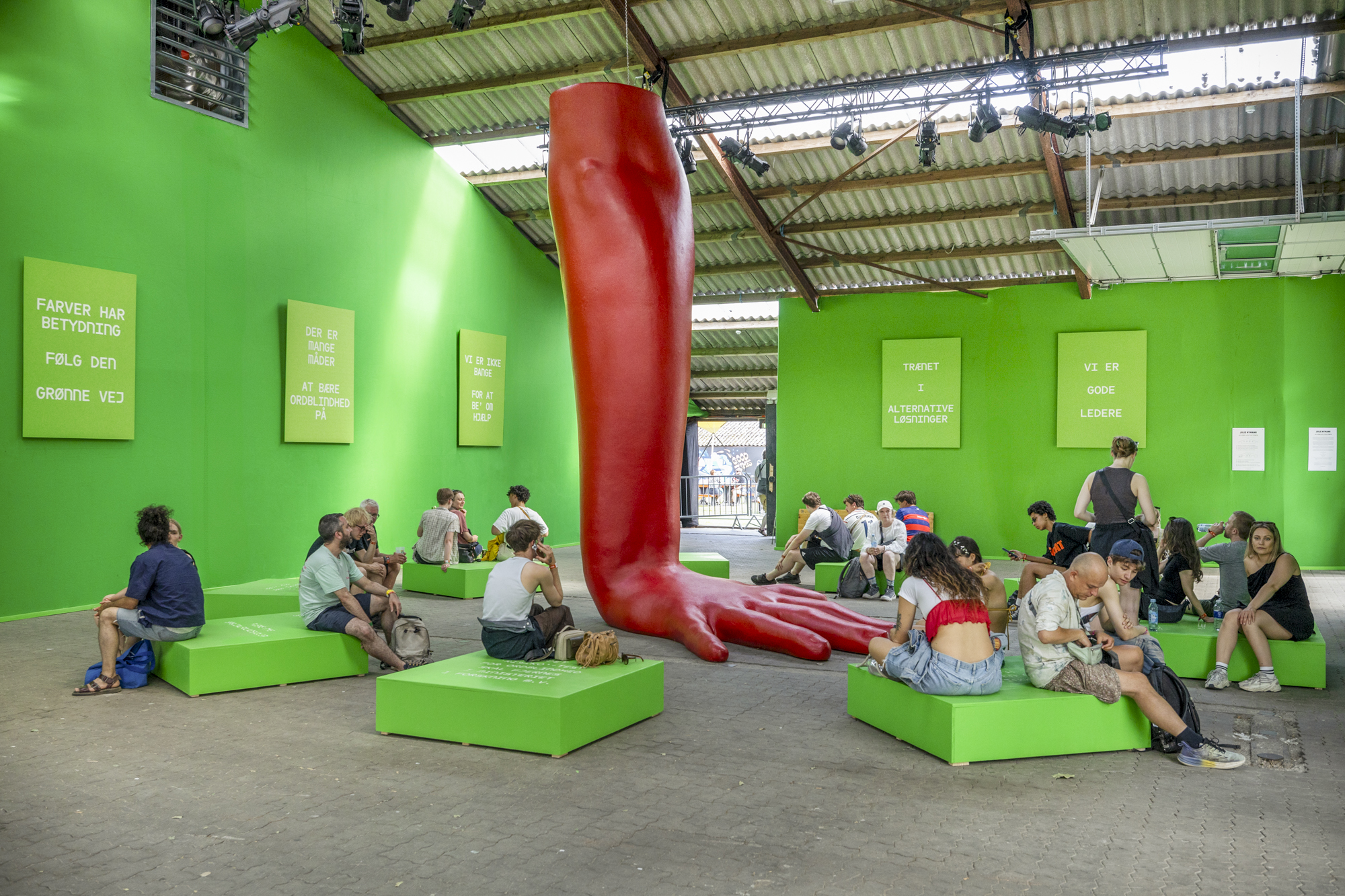
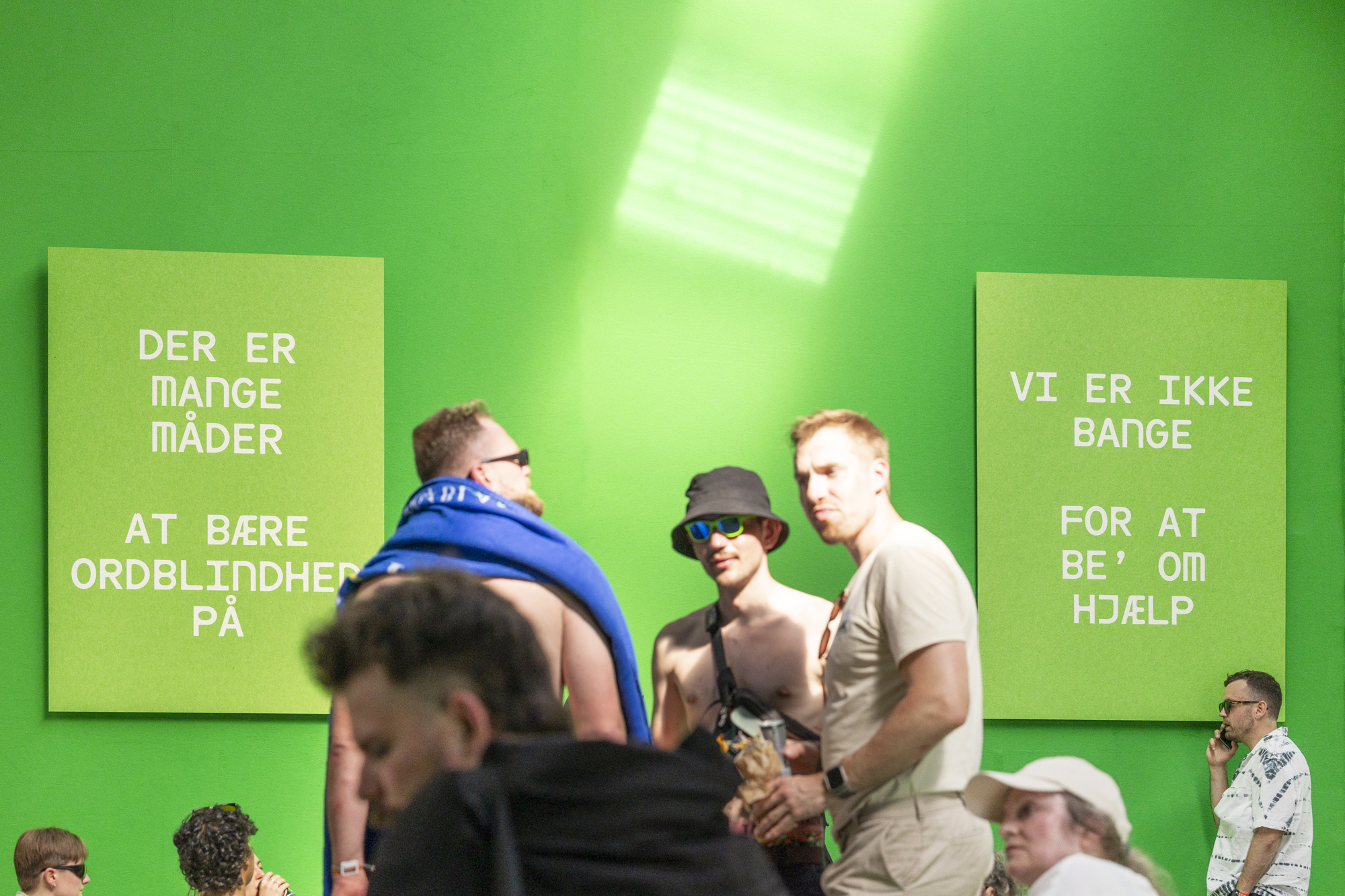

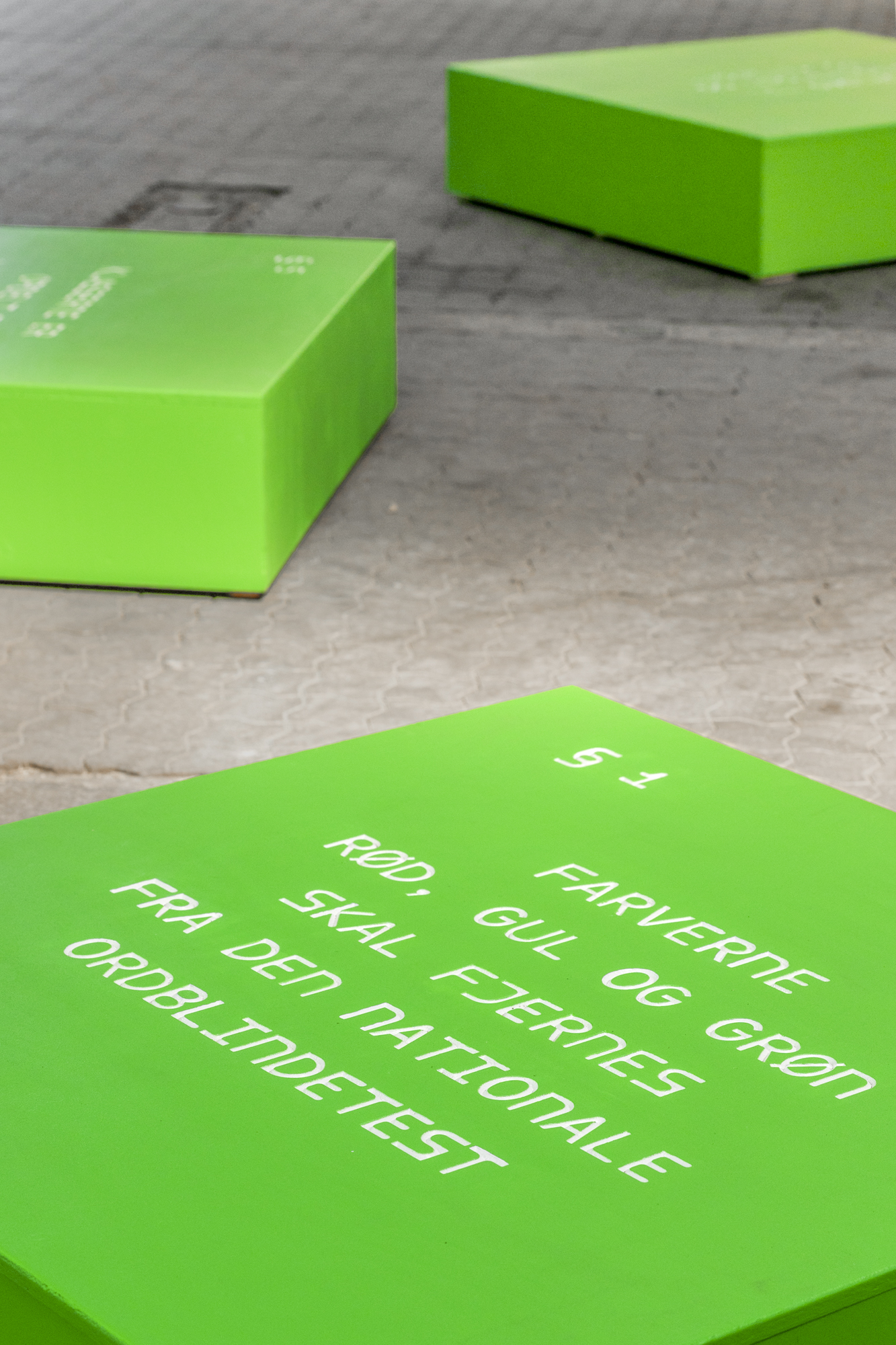
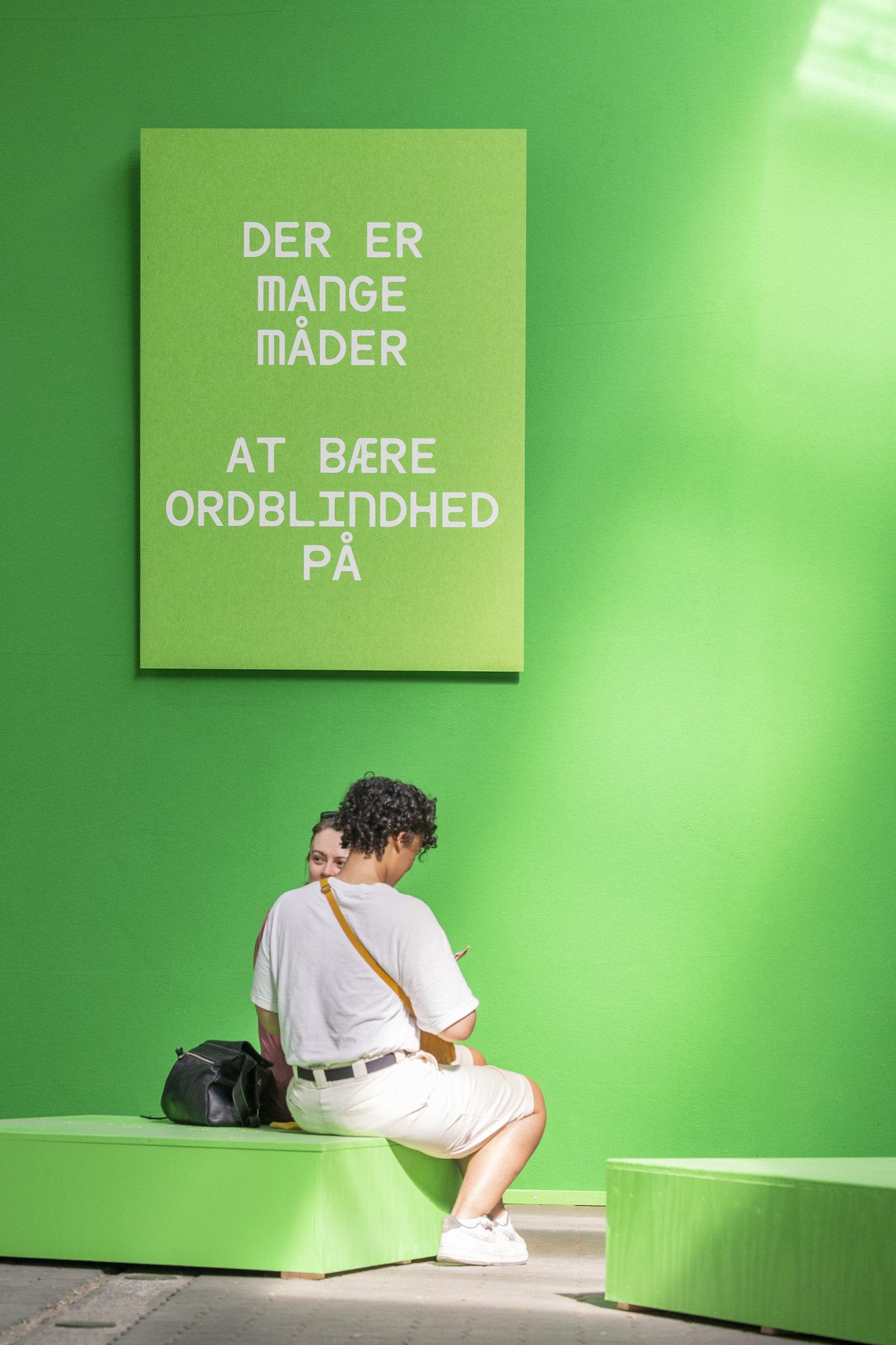
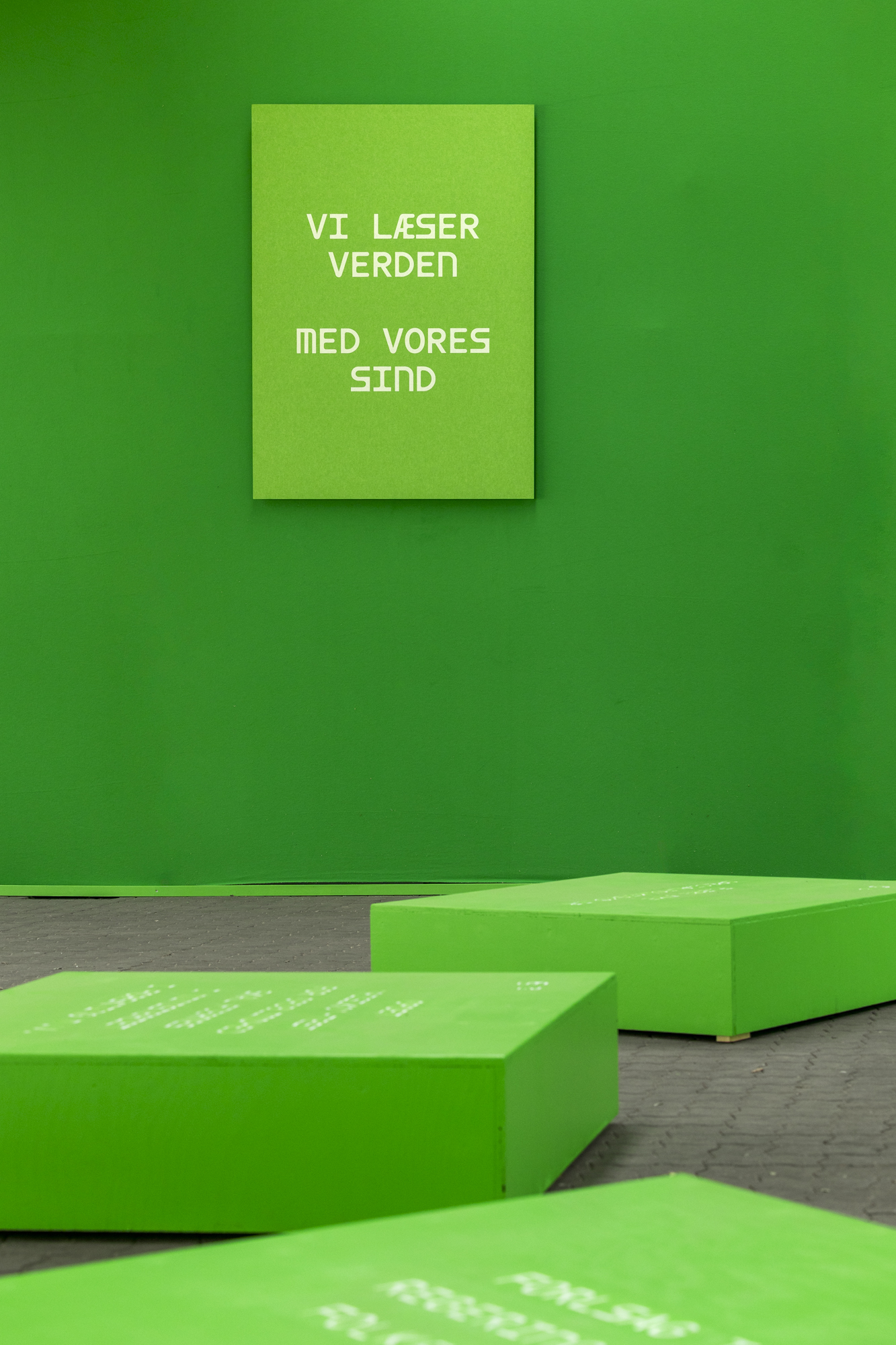
Photo Frida Gregersen
CREDITS
artist
Julie Nymann
Production Lead
Kristine Bech Sørensen
Grafisk Design
Louis Montes
Typeface
ABC Dinamo
Sculpture
Wow Factory
Install team
Tilda Lundbohm, Noah Holtegaard, Alda Mohr Eyðunardóttir, Stine Reitz, Rolf Drewsen, Lars Buchholtz, Nikolaj Phillipsen, Sofie Bymar, Sine Brik
Special thanks
Torso Electronics
Communications Strategic Rytter & Denke
Studio
Karina Lykkesborg, Pauline Koffi Vandet, Katinka Saarnak, Malou Solfjeld
Julie Nymann
Production Lead
Kristine Bech Sørensen
Grafisk Design
Louis Montes
Typeface
ABC Dinamo
Sculpture
Wow Factory
Install team
Tilda Lundbohm, Noah Holtegaard, Alda Mohr Eyðunardóttir, Stine Reitz, Rolf Drewsen, Lars Buchholtz, Nikolaj Phillipsen, Sofie Bymar, Sine Brik
Special thanks
Torso Electronics
Communications Strategic Rytter & Denke
Studio
Karina Lykkesborg, Pauline Koffi Vandet, Katinka Saarnak, Malou Solfjeld
Institutional Collaborations
Roskilde Festival & Art Hub Copenhagen
Head of Art & Activism
Sarah Staalhøj
Head of Art Production
Martin Ilsøe
Curator
Andrea Mæland
Choir Communication
Sarah Pihl Petersen,Thea Møller Jensen
Special thanks
The Behind-the-Scenes Team
Supported by
Roskilde Festival, Art Hub Copenhagen, Statens Kunstfond, Statens Værksteder for Kunst, Dansk Tennis Fond, Honoré Fonden, Den Hielmstierne-Rosencroneske Stiftelse, BUPL’s solidaritets- og kulturfond, Messetæpper og Flügger
Roskilde Festival & Art Hub Copenhagen
Head of Art & Activism
Sarah Staalhøj
Head of Art Production
Martin Ilsøe
Curator
Andrea Mæland
Choir Communication
Sarah Pihl Petersen,Thea Møller Jensen
Special thanks
The Behind-the-Scenes Team
Supported by
Roskilde Festival, Art Hub Copenhagen, Statens Kunstfond, Statens Værksteder for Kunst, Dansk Tennis Fond, Honoré Fonden, Den Hielmstierne-Rosencroneske Stiftelse, BUPL’s solidaritets- og kulturfond, Messetæpper og Flügger
Kor-performance: Fordelene ved at være ordblind
Choir performance: The Advantages of being dyslexic
2025 | sound installation + choir performance 30:00 min | performed at Platform stage Roskilde Festival 2025
“Choir performance: The Advantages of being dyslexic” is a 30-minute immersive multi-channel sound installation where the final song is preformed live by a choir.
At Platform, her sound installation Advantages of Being Dyslexic offers a playful and immersive listening experience with voices, personal stories, and a live choir. The installation amplifies the many ways dyslexia is experienced and celebrates the power of community.
The choir includes VUC Roskilde students with lived experience of dyslexia and professional singers. The performance will be in Danish, but everyone is welcome.
At Platform, her sound installation Advantages of Being Dyslexic offers a playful and immersive listening experience with voices, personal stories, and a live choir. The installation amplifies the many ways dyslexia is experienced and celebrates the power of community.
The choir includes VUC Roskilde students with lived experience of dyslexia and professional singers. The performance will be in Danish, but everyone is welcome.







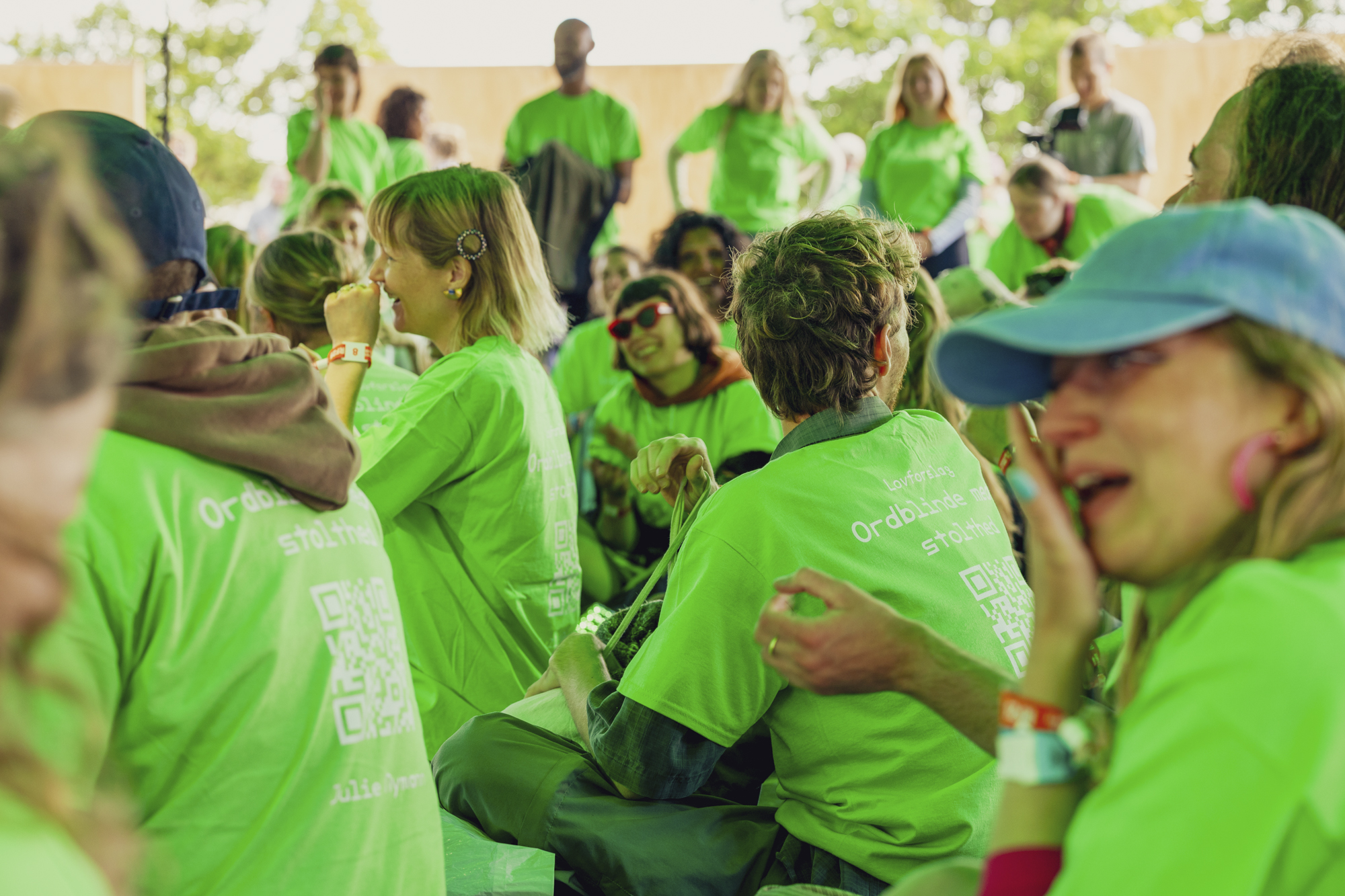
video Andreas Johnsen og Mik Stampe Fogh
CREDITS
PLATFORM
“Fordelene ved at være ordblind”
artist
Julie Nymann
choir director & composer
Mette Damm
sound design
Stephen William McEvoy
vokal VUC Roskilde
HF for Ordblinde Students
vokal performere
Proceskoret
lead vokal performere
Henrik Chulu, Åse Eg Jørgensen, Jesper Thorn, Olivia Barrett, Mette Moltke Wozniak
clothing
Jørnæs
graphic elements
Louis Montes
typeface
ABC Dinamo
original score
“Fordelene ved at være ordblind”
artist & writer
Julie Nymann
sound designer
Joëlle McGovern Serret
»Samlet Union« Composer, Producer & Script Editor
Agnes Valbjørn Stavnsbjerg
narrator
Jonas Kjeldgaard Sørensen, Mette Moltke Wozniak, Julie Nymann
voices
Limfjordskolen Struer, Ordblindeklubben Nørre Nissum, FGU Vesterbro, Anette Marcher, Kim Lykkegaard, Marie Vedsmand
“Fordelene ved at være ordblind”
artist
Julie Nymann
choir director & composer
Mette Damm
sound design
Stephen William McEvoy
vokal VUC Roskilde
HF for Ordblinde Students
vokal performere
Proceskoret
lead vokal performere
Henrik Chulu, Åse Eg Jørgensen, Jesper Thorn, Olivia Barrett, Mette Moltke Wozniak
clothing
Jørnæs
graphic elements
Louis Montes
typeface
ABC Dinamo
original score
“Fordelene ved at være ordblind”
artist & writer
Julie Nymann
sound designer
Joëlle McGovern Serret
»Samlet Union« Composer, Producer & Script Editor
Agnes Valbjørn Stavnsbjerg
narrator
Jonas Kjeldgaard Sørensen, Mette Moltke Wozniak, Julie Nymann
voices
Limfjordskolen Struer, Ordblindeklubben Nørre Nissum, FGU Vesterbro, Anette Marcher, Kim Lykkegaard, Marie Vedsmand
communications
strategic
Rytter & Denke
studio
Karina Lykkesborg, Pauline Koffi Vandet, Katinka Saarnak, Malou Solfjeld
institutional collaborations
Roskilde Festival & Art Hub Copenhagen
head of art & activism
Sarah Staalhøj
head of art production
Martin Ilsøe
curator
Andrea Mæland
choir communication
Sarah Pihl Petersen, Thea Møller Jensen
Special thanks
The Behind-the-Scenes Team
Supported by
Roskilde Festival, Art Hub Copenhagen, Statens Kunstfond, Statens Værksteder for Kunst, Dansk Tennis Fond, Honoré Fonden, Den Hielmstierne-Rosencroneske Stiftelse, BUPL’s solidaritets- og kulturfond, Messetæpper og Flügger
strategic
Rytter & Denke
studio
Karina Lykkesborg, Pauline Koffi Vandet, Katinka Saarnak, Malou Solfjeld
institutional collaborations
Roskilde Festival & Art Hub Copenhagen
head of art & activism
Sarah Staalhøj
head of art production
Martin Ilsøe
curator
Andrea Mæland
choir communication
Sarah Pihl Petersen, Thea Møller Jensen
Special thanks
The Behind-the-Scenes Team
Supported by
Roskilde Festival, Art Hub Copenhagen, Statens Kunstfond, Statens Værksteder for Kunst, Dansk Tennis Fond, Honoré Fonden, Den Hielmstierne-Rosencroneske Stiftelse, BUPL’s solidaritets- og kulturfond, Messetæpper og Flügger
acquired by
Kunst på Arbejde
Kunst på Arbejde
Dyslektiske styrker er frø vi vil så
Dyslexic strengths are seeds we will plant
2025 | 8 prints on green acoustic panels Exhibited | Gloria’s foyer Roskilde Festival 2025; GRASP 2025


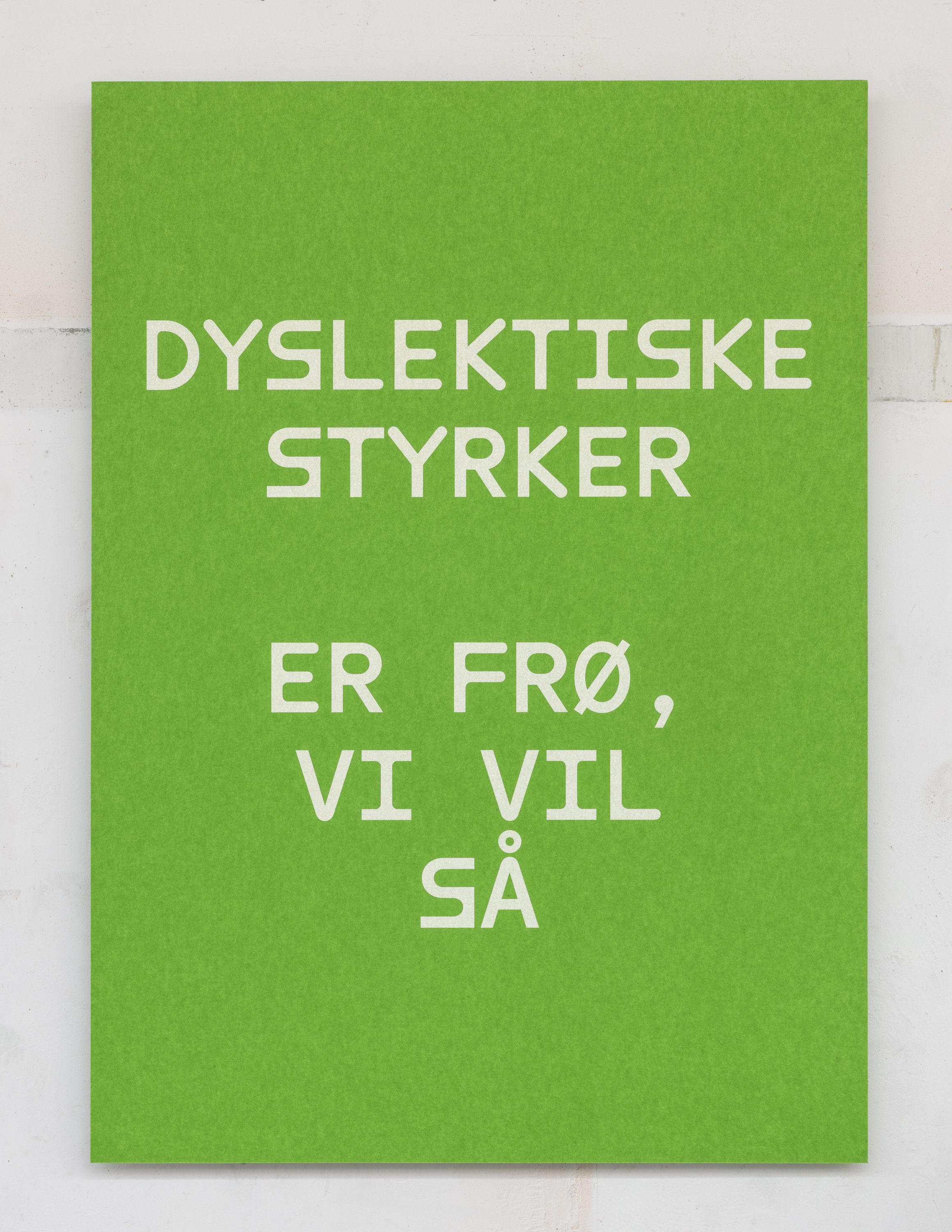
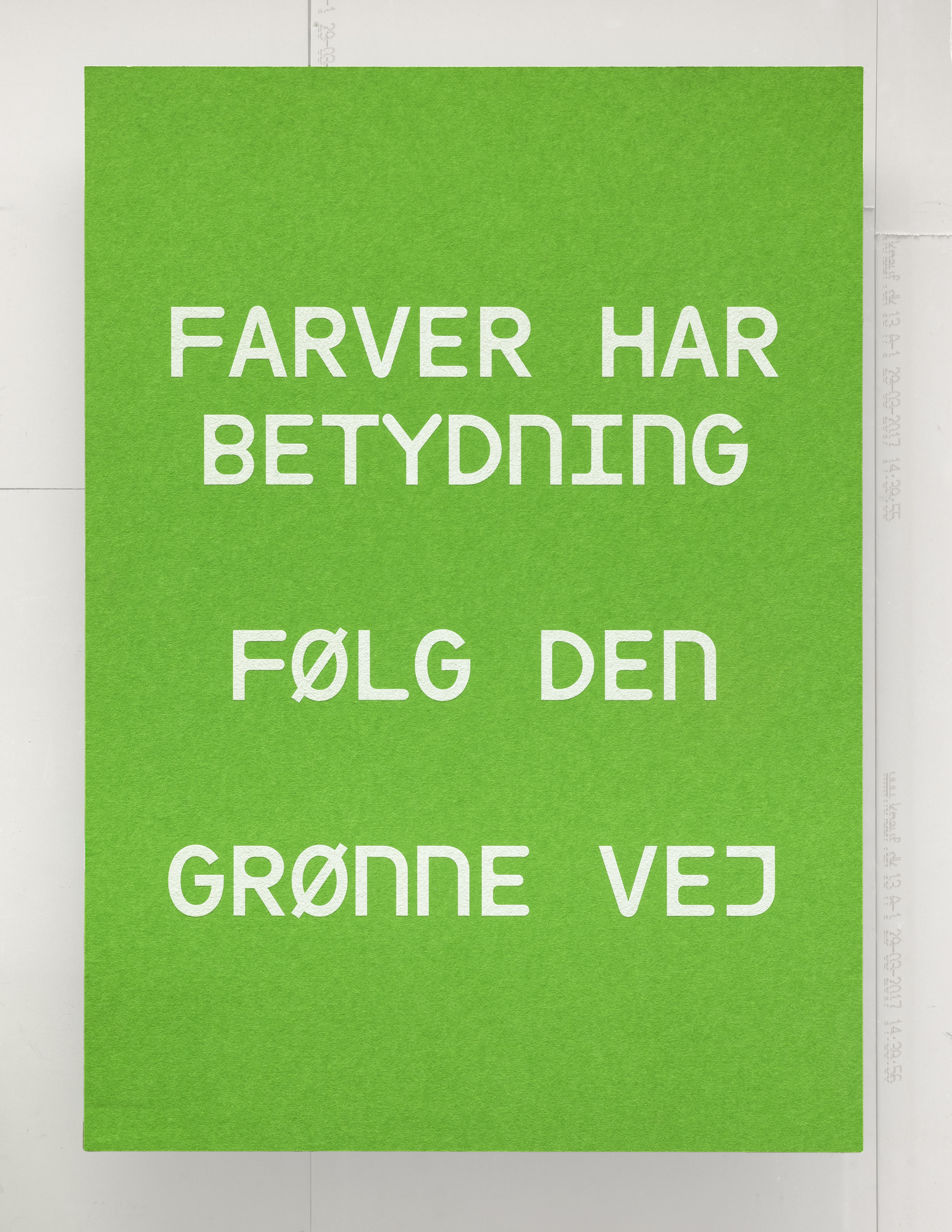

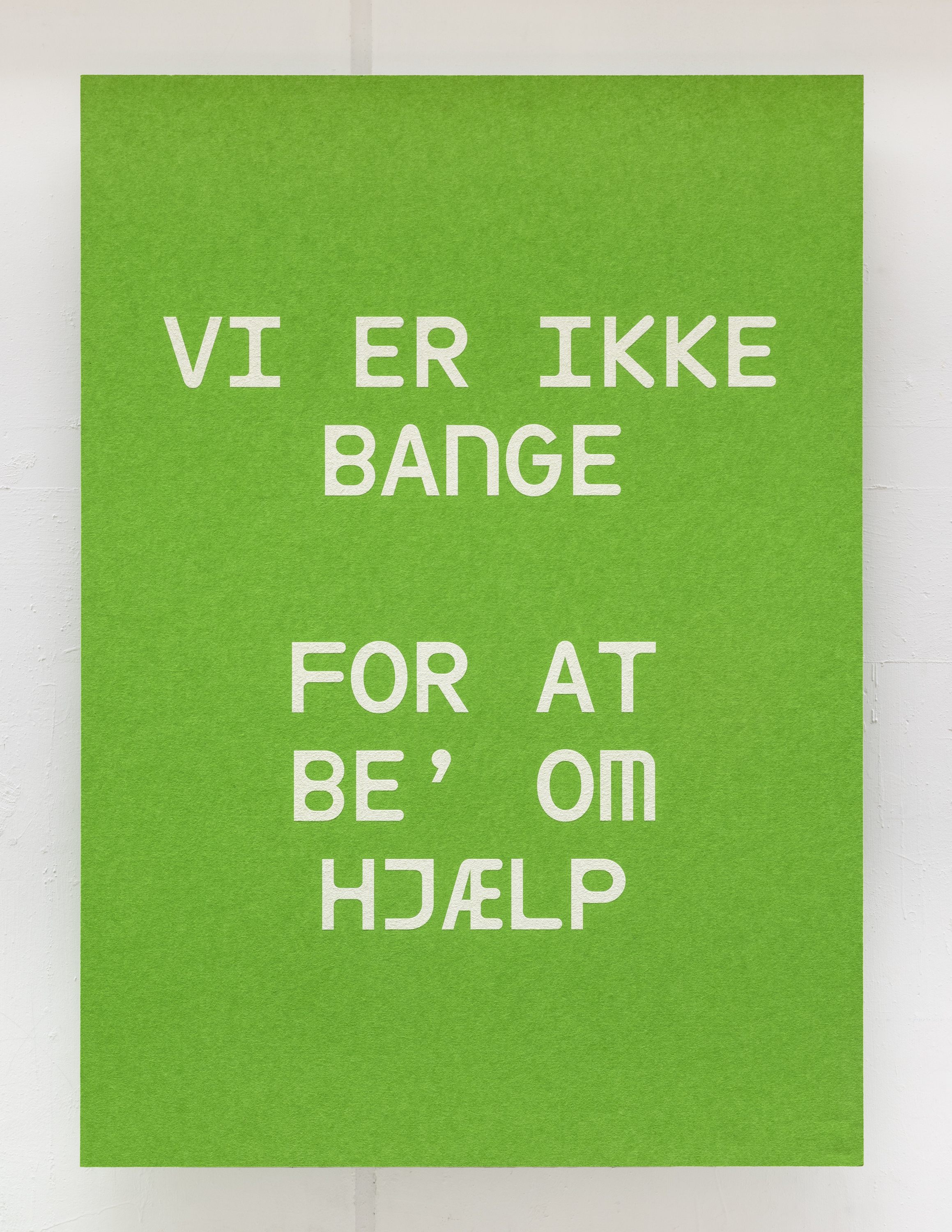

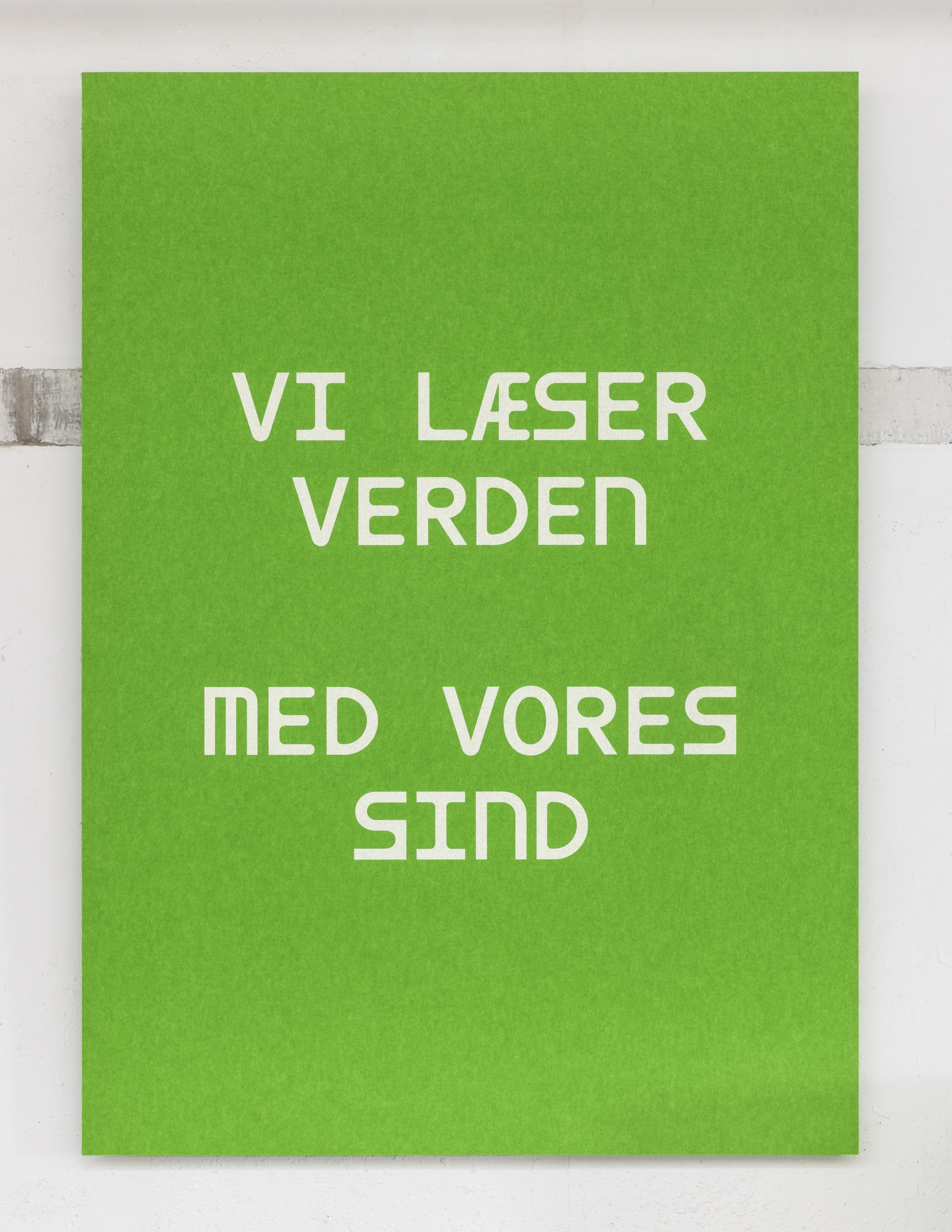


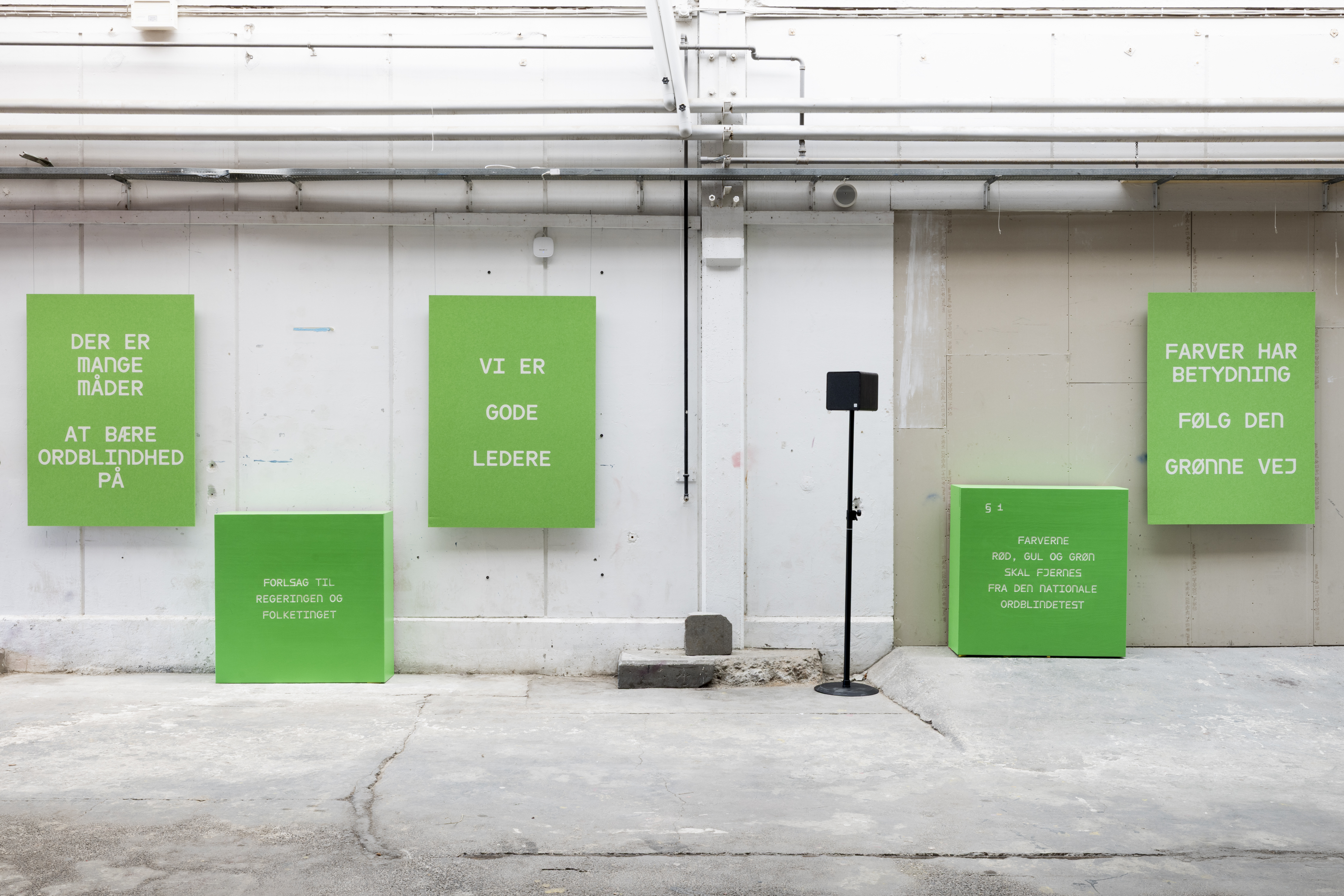
Installation view at GRASP 2025. Photo Mads Holm
ILLUSTRATED
Nationalt Videncenter for Læsning
Viden om Literacy nr. 38
Nationalt Videncenter for Læsning
Viden om Literacy nr. 38

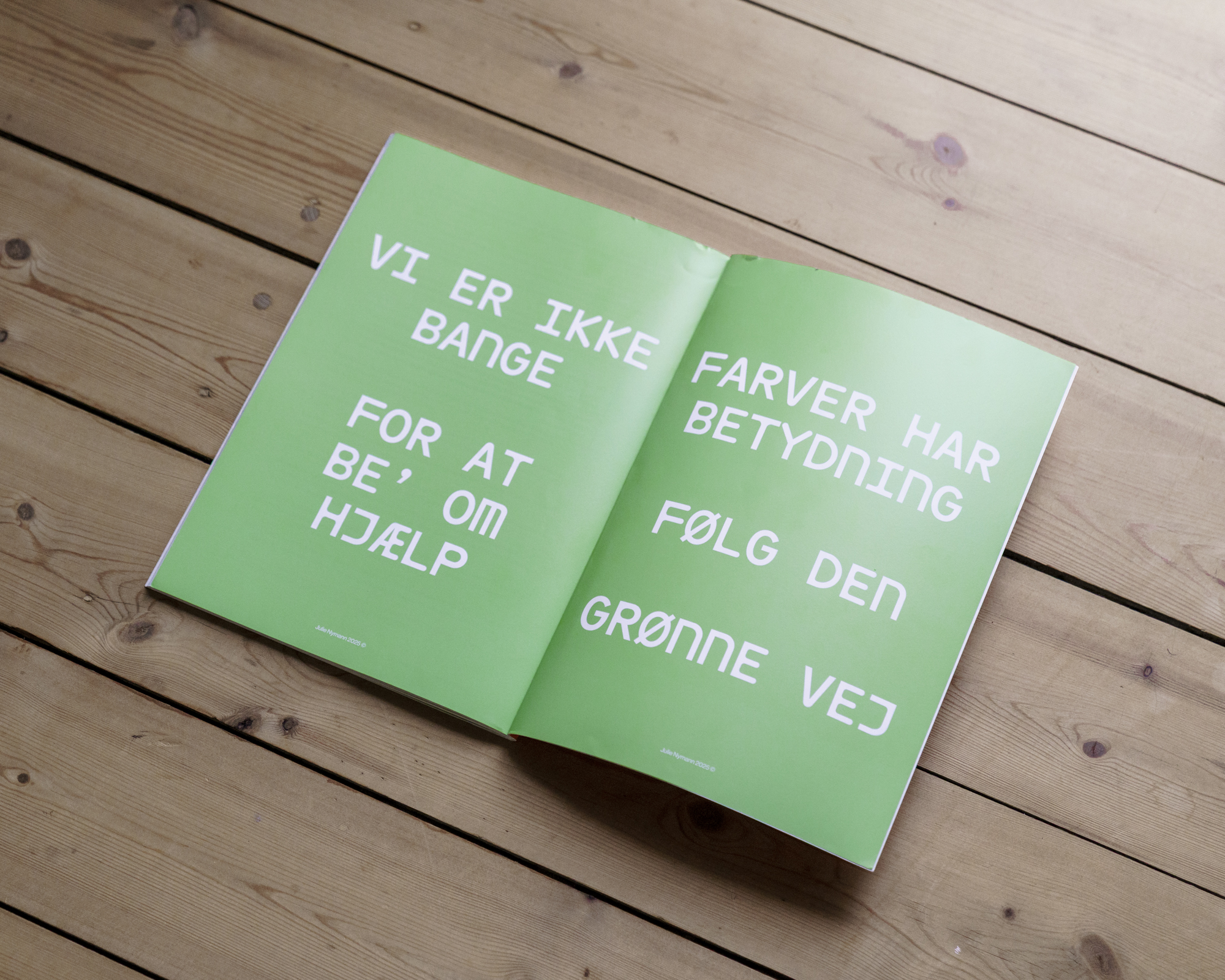
CREDITS
artist
Julie Nymann
Grafisk Design
Louis Montes
Julie Nymann
Grafisk Design
Louis Montes
Institutional Collaborations
Roskilde Festival & Art Hub Copenhagen
Roskilde Festival & Art Hub Copenhagen
Fordelen ved at være ordblind
The Advantages of being dyslexic2024 | A 8 channel sound installation | 21:00 min loop
Exhibited | Kunsthal Charlottenborg; Struer Museum; Dokk1
‘The Advantages of Being Dyslexic’ is a 21-minute immersive multi-channel sound installation.
This installation takes place in a 5x5 meter green fabric room and is based on powerful and insightful stories collected from workshops and an open call in 2023, involving over 80 children, teens, and adults with dyslexia.
This installation takes place in a 5x5 meter green fabric room and is based on powerful and insightful stories collected from workshops and an open call in 2023, involving over 80 children, teens, and adults with dyslexia.

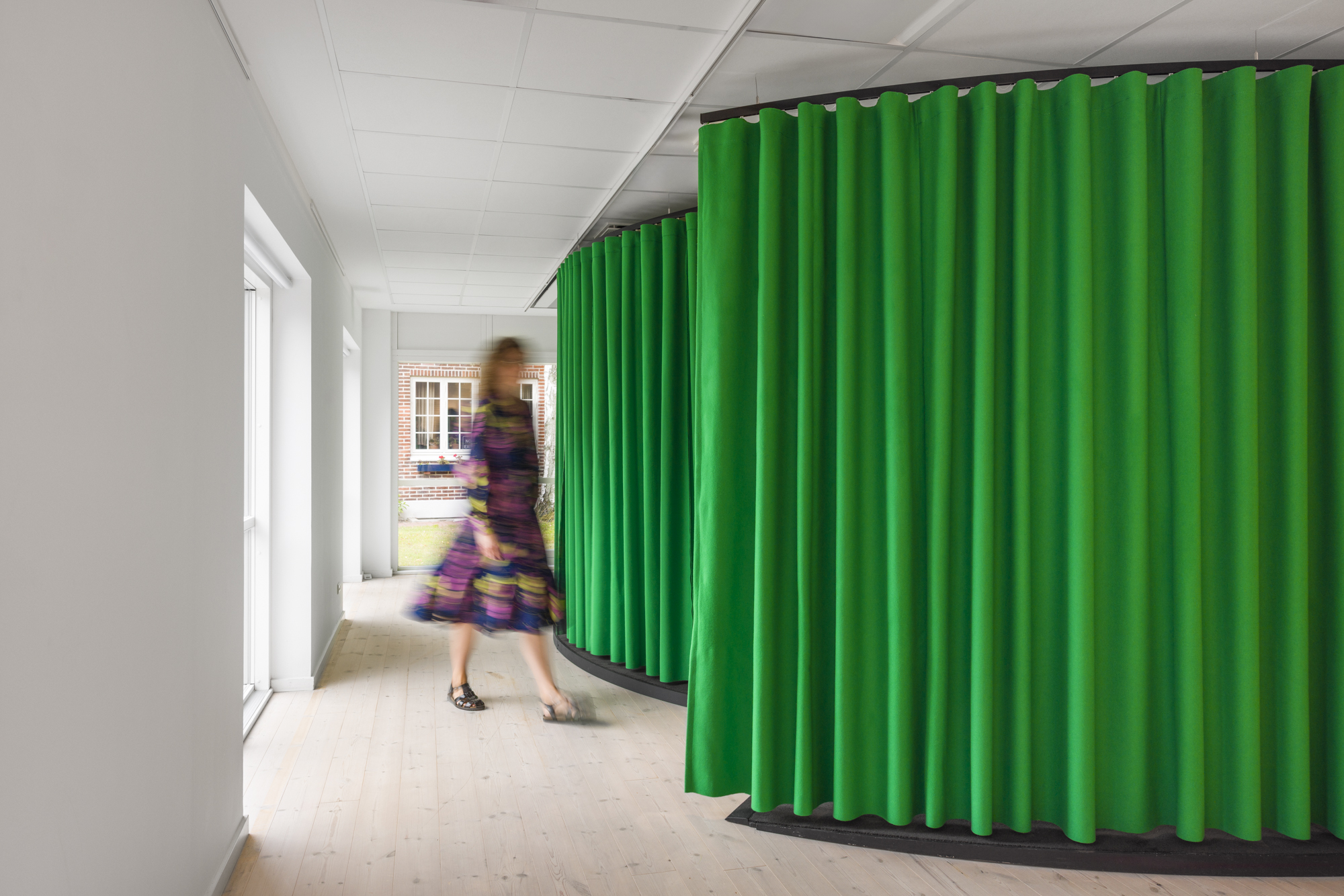
Over 500,000 people live with dyslexia in Denmark. The installation aims to imagine a society that focuses on abilities, encouraging us to believe in and embrace our neurodiversity.
The central question posed during the workshops was: "Hvad er fordelene ved at være ordblind?" ("What are the advantages of being dyslexic?").
For many participants, ranging from 3rd graders to 70-year-olds, it was the first time they were asked to consider the benefits of dyslexia, and how their ability to translate sound into letters and vice versa could be regarded as a superpower rather than a 'dysfunction'.
The central question posed during the workshops was: "Hvad er fordelene ved at være ordblind?" ("What are the advantages of being dyslexic?").
For many participants, ranging from 3rd graders to 70-year-olds, it was the first time they were asked to consider the benefits of dyslexia, and how their ability to translate sound into letters and vice versa could be regarded as a superpower rather than a 'dysfunction'.
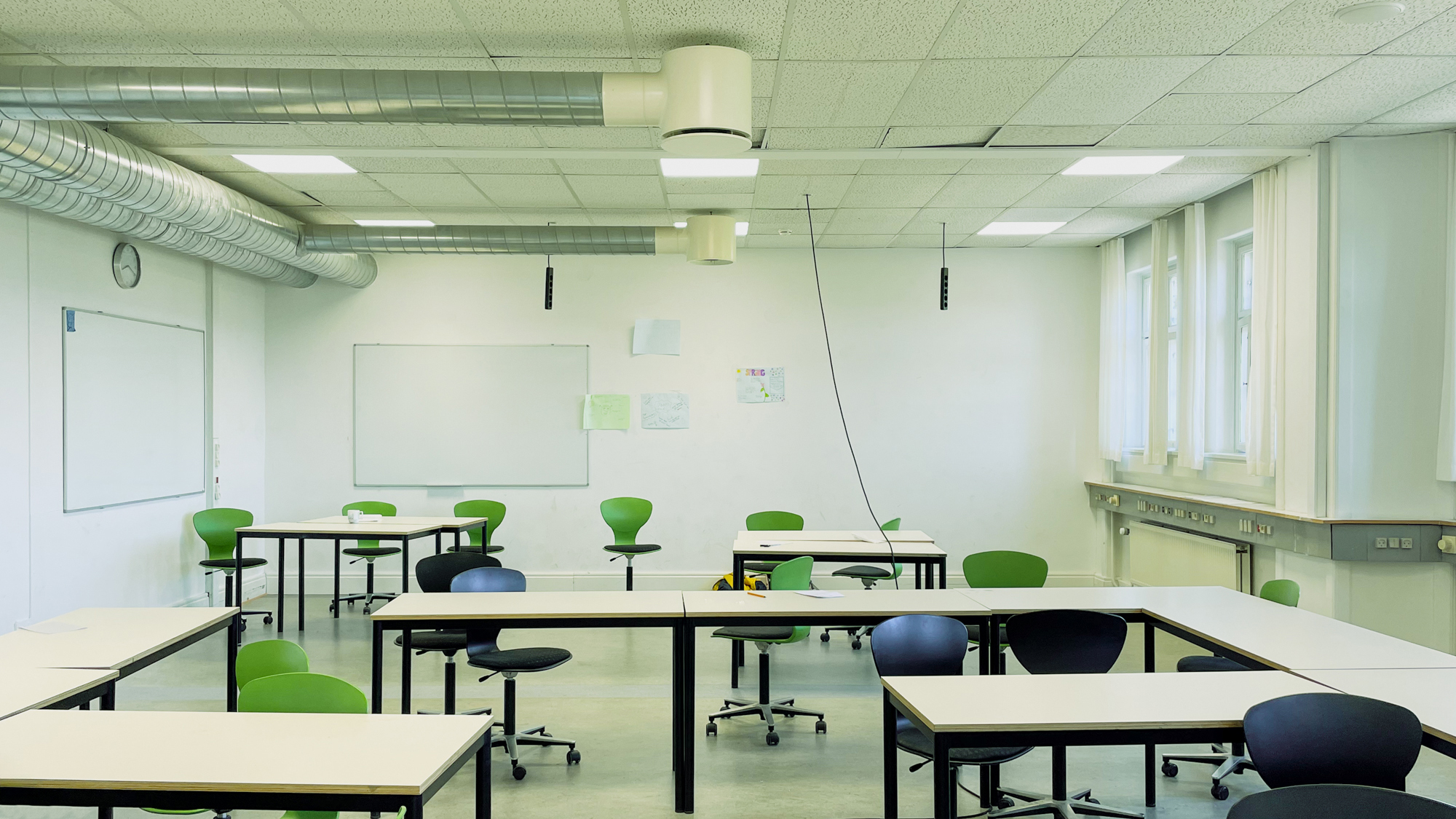
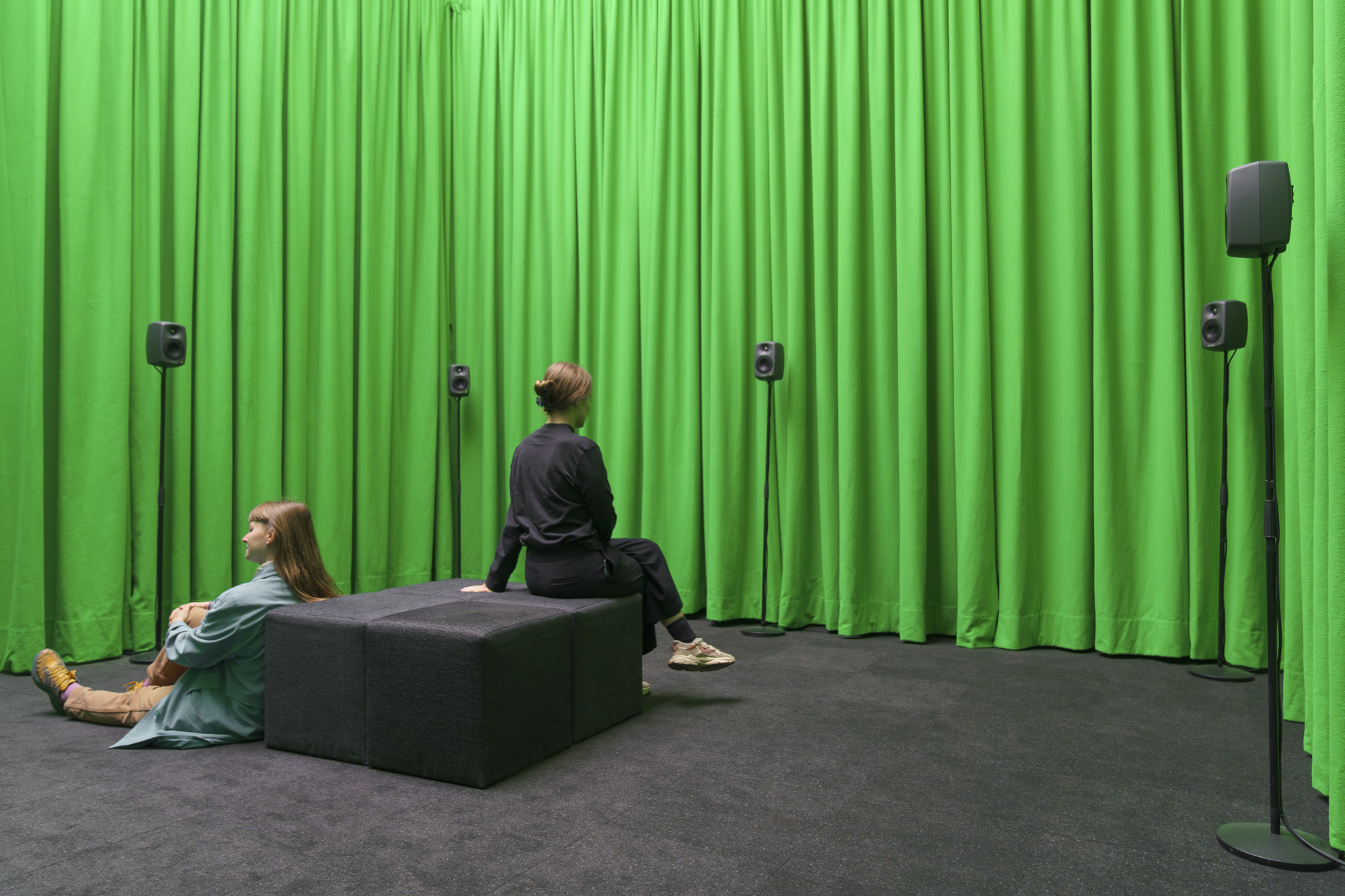
The sound installation is a composite of recordings from these workshops, intertwined with narration based on the participants' stories, and concludes with a community song.
By sharing these diverse experiences and reflections, the installation amplifies the wide spectrum of ways people live with and cope with dyslexia.
Dyslexic experiences tell us something profound about difference, experience, and neurodiversity. It challenge our perceptions of the relationship between spoken and written words and how we navigate systems built around concepts of 'normality'.
Living with dyslexia compels individuals to creatively interpret their environment, leading to the development of multi-dimensional tools and strategies.
By sharing these diverse experiences and reflections, the installation amplifies the wide spectrum of ways people live with and cope with dyslexia.
Dyslexic experiences tell us something profound about difference, experience, and neurodiversity. It challenge our perceptions of the relationship between spoken and written words and how we navigate systems built around concepts of 'normality'.
Living with dyslexia compels individuals to creatively interpret their environment, leading to the development of multi-dimensional tools and strategies.
Nymann has adopted green as a symbol of dyslexia awareness, using it in her installation and campaign due to its calming yet hyper-visible hue.
By reinterpreting a pathologized 'disorder' into a source of ingenuity, the sound piece celebrates dyslexia and aims to engage with society’s understanding of it, challenging our predispositions about what a dyslexic experience is.
The sound work stands as a tribute to dyslexia.
By reinterpreting a pathologized 'disorder' into a source of ingenuity, the sound piece celebrates dyslexia and aims to engage with society’s understanding of it, challenging our predispositions about what a dyslexic experience is.
The sound work stands as a tribute to dyslexia.


PRESS
"I could relate to almost everything and felt acknowledged and understood."
— Anonymous museum visitor
— Anonymous museum visitor

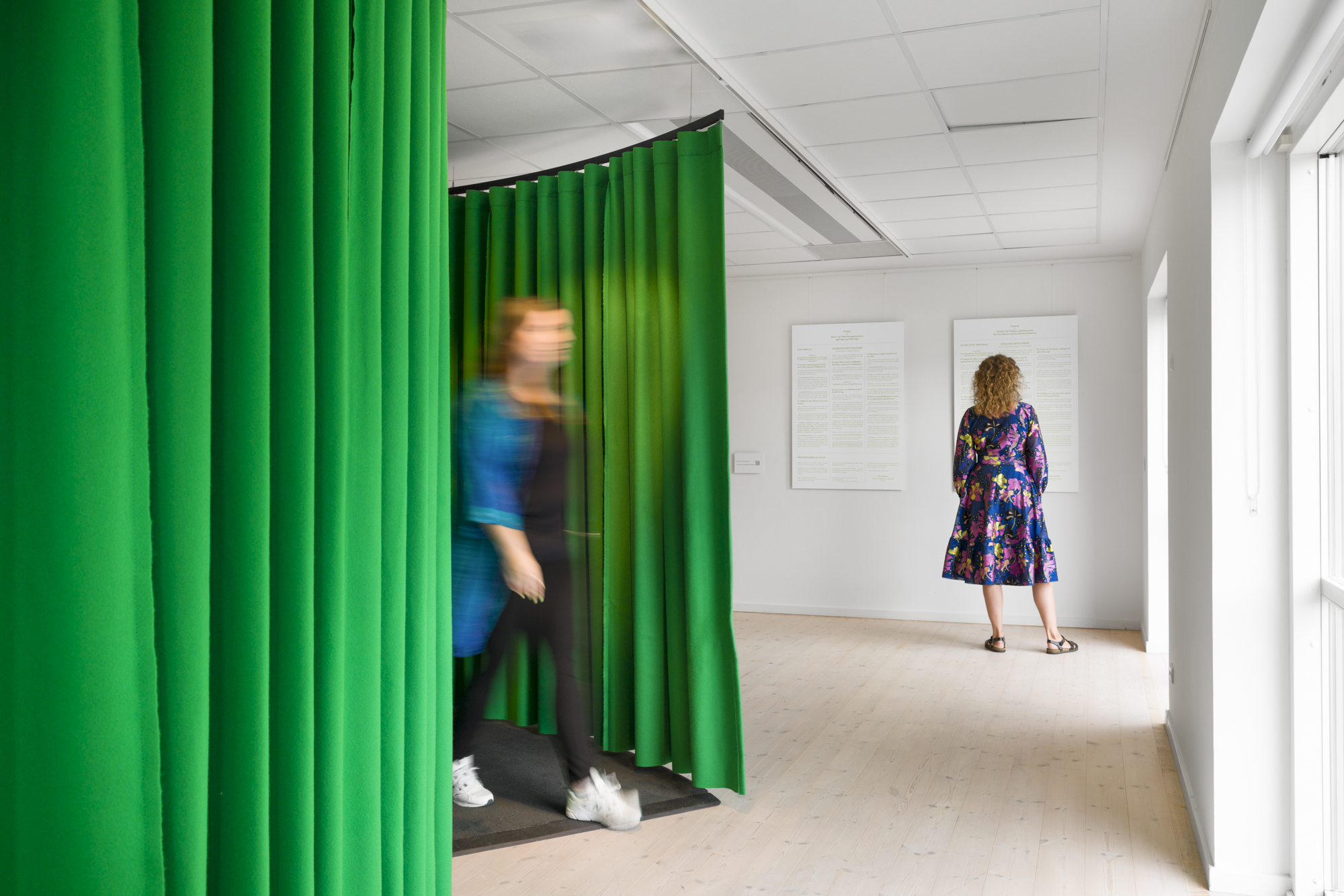
CREDITS
artist
Julie Nymann
sound designer
Joëlle McGovern Serret
»samlet union«
composer & producer
Agnes Valbjørn Stavnsbjerg
narrator
Jonas Kjeldgaard Sørensen
Mette Moltke Wozniak
Julie Nymann
voices
Limfjordskolen Struer, Ordblindeklubben Nørre Nissum, FGU Vesterbro, Anette Marcher, Kim Lykkegaard and Marie Vedsmand
writer
Julie Nymann
script editor
Agnes Valbjørn Stavnsbjerg
dramaturgi
Julie Nymann
Joëlle McGovern Serret
technical coordination
Kristine Bech Sørensen
technical assistance
Nikolaj N. Phillipsen
Keith Allan
Tilda Lundbohm
Julie Nymann
sound designer
Joëlle McGovern Serret
»samlet union«
composer & producer
Agnes Valbjørn Stavnsbjerg
narrator
Jonas Kjeldgaard Sørensen
Mette Moltke Wozniak
Julie Nymann
voices
Limfjordskolen Struer, Ordblindeklubben Nørre Nissum, FGU Vesterbro, Anette Marcher, Kim Lykkegaard and Marie Vedsmand
writer
Julie Nymann
script editor
Agnes Valbjørn Stavnsbjerg
dramaturgi
Julie Nymann
Joëlle McGovern Serret
technical coordination
Kristine Bech Sørensen
technical assistance
Nikolaj N. Phillipsen
Keith Allan
Tilda Lundbohm
Struer Museum exhibition is supported by
Færch Fonden, the Danish Arts Foundation, EgeFonden, Knud Højgaards Fond, the Hielmstierne-Rosencrone Foundation, and Kvadrat.
Exit 24 at Kunsthal Charlottenborg is supported by
Politiken-Fonden and Overretssagfører L. Zeuthens Mindelegat
special thanks to all of you for sharing your stories
All teachers and dyslexics who were part of ‘Fordelene ved at være ordblind’-workshops at Københavns VUC, FGU Vesterbro, Limfjordskolen Struer, Ordblindeklubben at Nørre Nissum skole, dyslexics students in higher education who receive SPS, and dyslexics in a public open call
thank you
Sound Art Lab, Ordblindeinstituttet, SPS counselor at Københavns VUC, Struer municipality and library
furthermore, thank you
Andrea Diermayr, Helle Harnisch, Ida Vestergaard Øyan, Jane Hye Jin Kaisen, Kristel Laurits, Kristine Bech Sørensen, Lars Bo Henriksen, Lars Buchholtz, Louise Rytter, Maibritt Borgen, Oskar Koliander, Pi Bartholdy, Rune Søchting, Silas Emmery, Troels Dankert, and Vibeke Rasmussen
Færch Fonden, the Danish Arts Foundation, EgeFonden, Knud Højgaards Fond, the Hielmstierne-Rosencrone Foundation, and Kvadrat.
Exit 24 at Kunsthal Charlottenborg is supported by
Politiken-Fonden and Overretssagfører L. Zeuthens Mindelegat
special thanks to all of you for sharing your stories
All teachers and dyslexics who were part of ‘Fordelene ved at være ordblind’-workshops at Københavns VUC, FGU Vesterbro, Limfjordskolen Struer, Ordblindeklubben at Nørre Nissum skole, dyslexics students in higher education who receive SPS, and dyslexics in a public open call
thank you
Sound Art Lab, Ordblindeinstituttet, SPS counselor at Københavns VUC, Struer municipality and library
furthermore, thank you
Andrea Diermayr, Helle Harnisch, Ida Vestergaard Øyan, Jane Hye Jin Kaisen, Kristel Laurits, Kristine Bech Sørensen, Lars Bo Henriksen, Lars Buchholtz, Louise Rytter, Maibritt Borgen, Oskar Koliander, Pi Bartholdy, Rune Søchting, Silas Emmery, Troels Dankert, and Vibeke Rasmussen
Forslag til lovændring:
Ordblinde med stolthed
Proposal for legislative change: Dyslexia with Pride
2024 | print; website; t-shirts
Exhibited | Kunsthal Charlottenborg; Struer Museum; Roskilde Festival
Next to the soundinstallation ‘Fordelene ved at være ordblind’ is exibitet ‘Forslag til lovændring: Ordblinde med stolthed’ (‘Proposal for legislative change: Dyslexia with Pride‘), an artistic manifesto written as a Danish legislative proposal.
Link to online artistic manifesto ︎︎︎︎
Link to online artistic manifesto ︎︎︎︎

Using the public forum of Kunsthal Charlottenbrog, Nymann’s project puts forward a manifest of several new bills and a law proposal for regulatory changes of how to frame dyslexia within the danish educational system, with the ambition that people living with dyslexia can be confident and proud to be considered a celebrated part of society. ︎︎︎︎
PRESS
“Julie Nymann is proud to live with dyslexia – it has its advantages: She now has six proposals for the Minister of Education”
– Berlingske
PRESS
“Julie Nymann is proud to live with dyslexia – it has its advantages: She now has six proposals for the Minister of Education”
– Berlingske
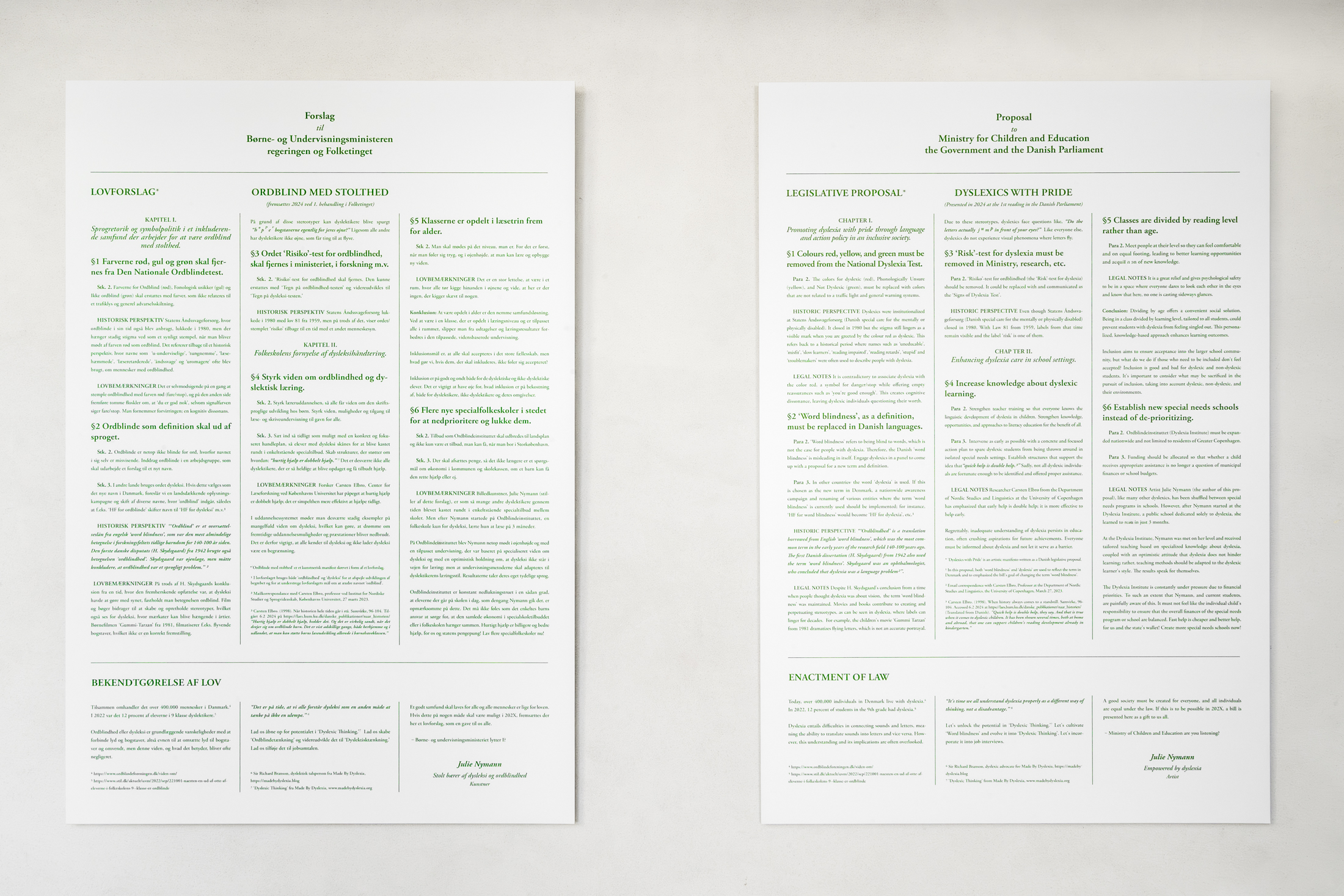


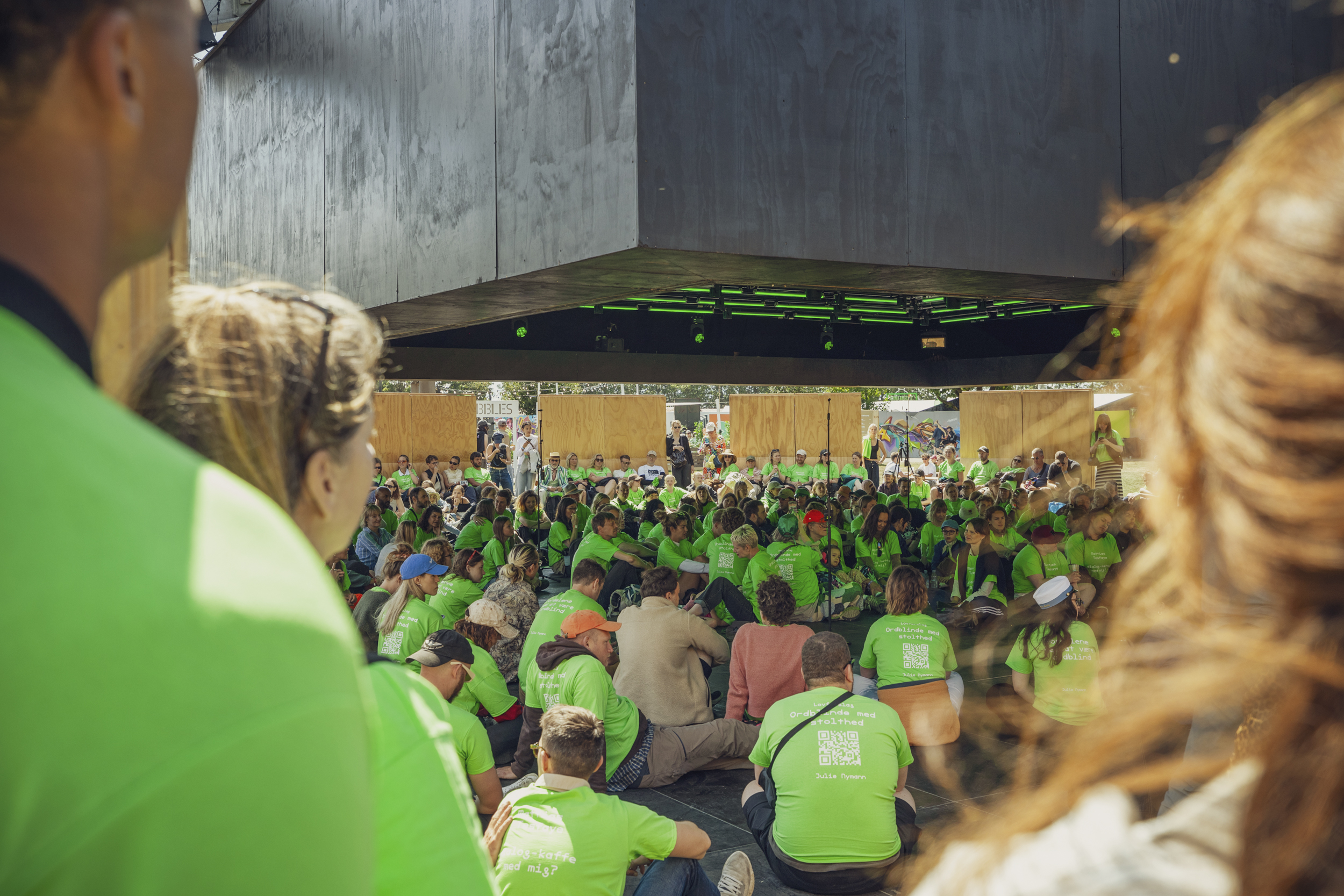
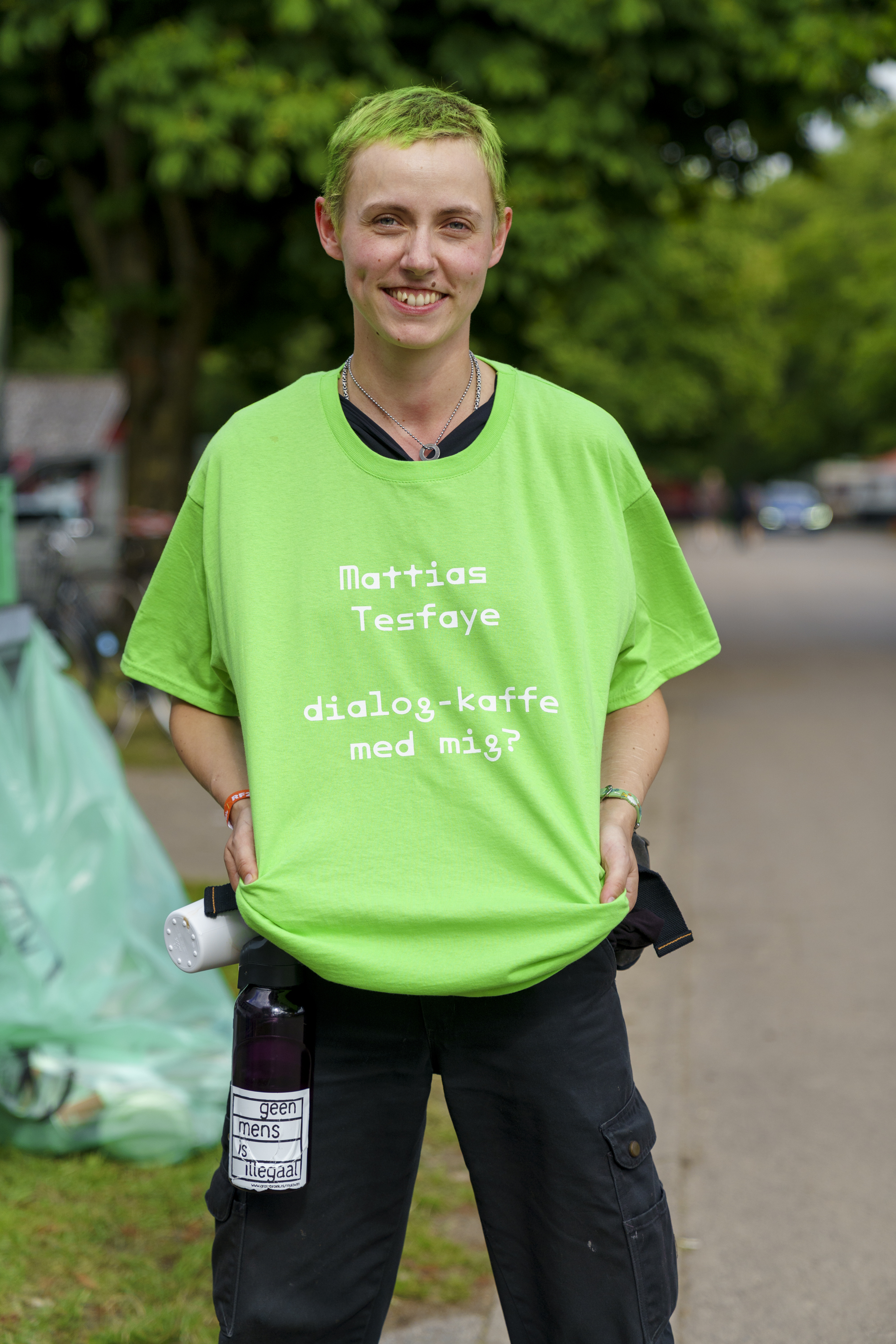

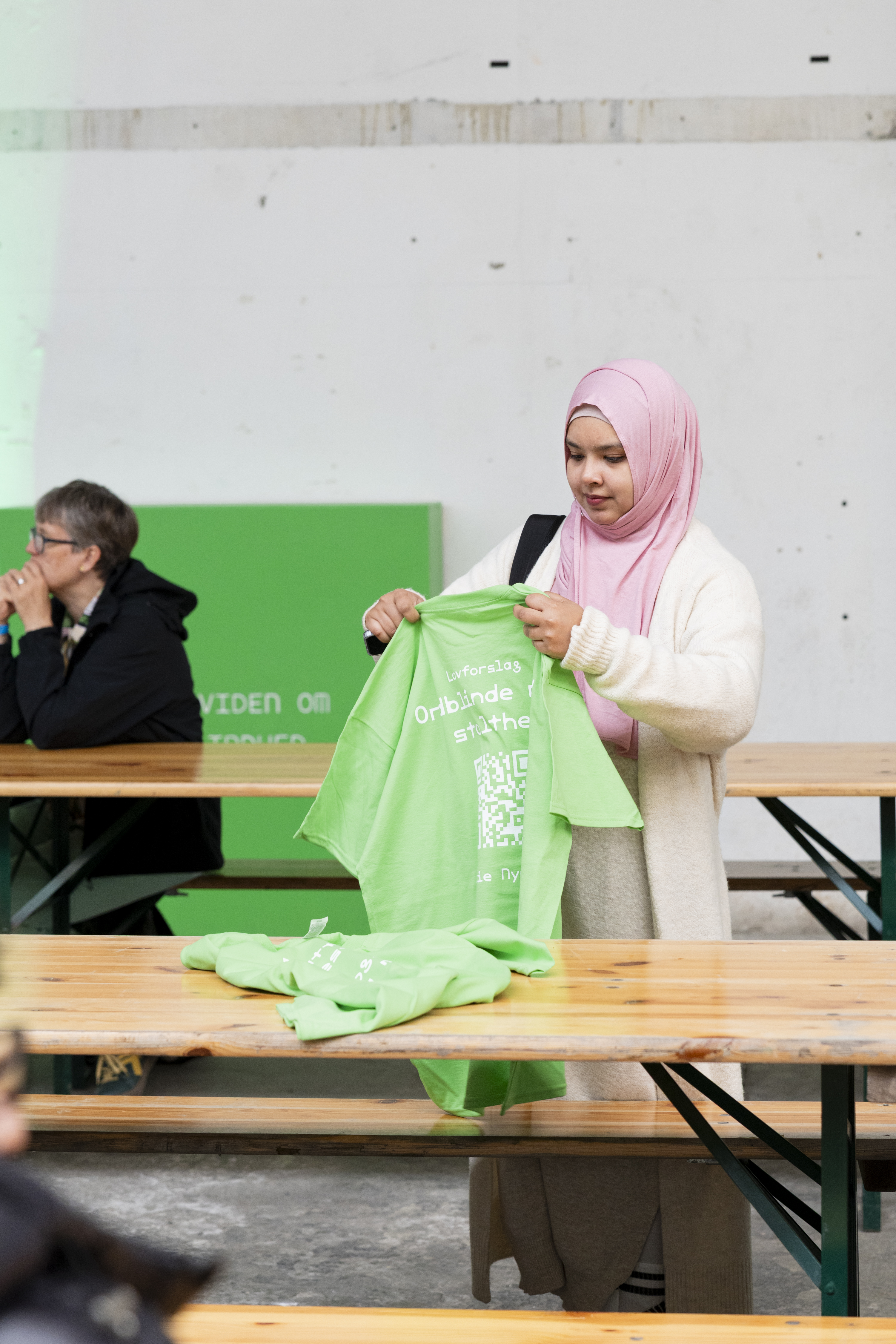
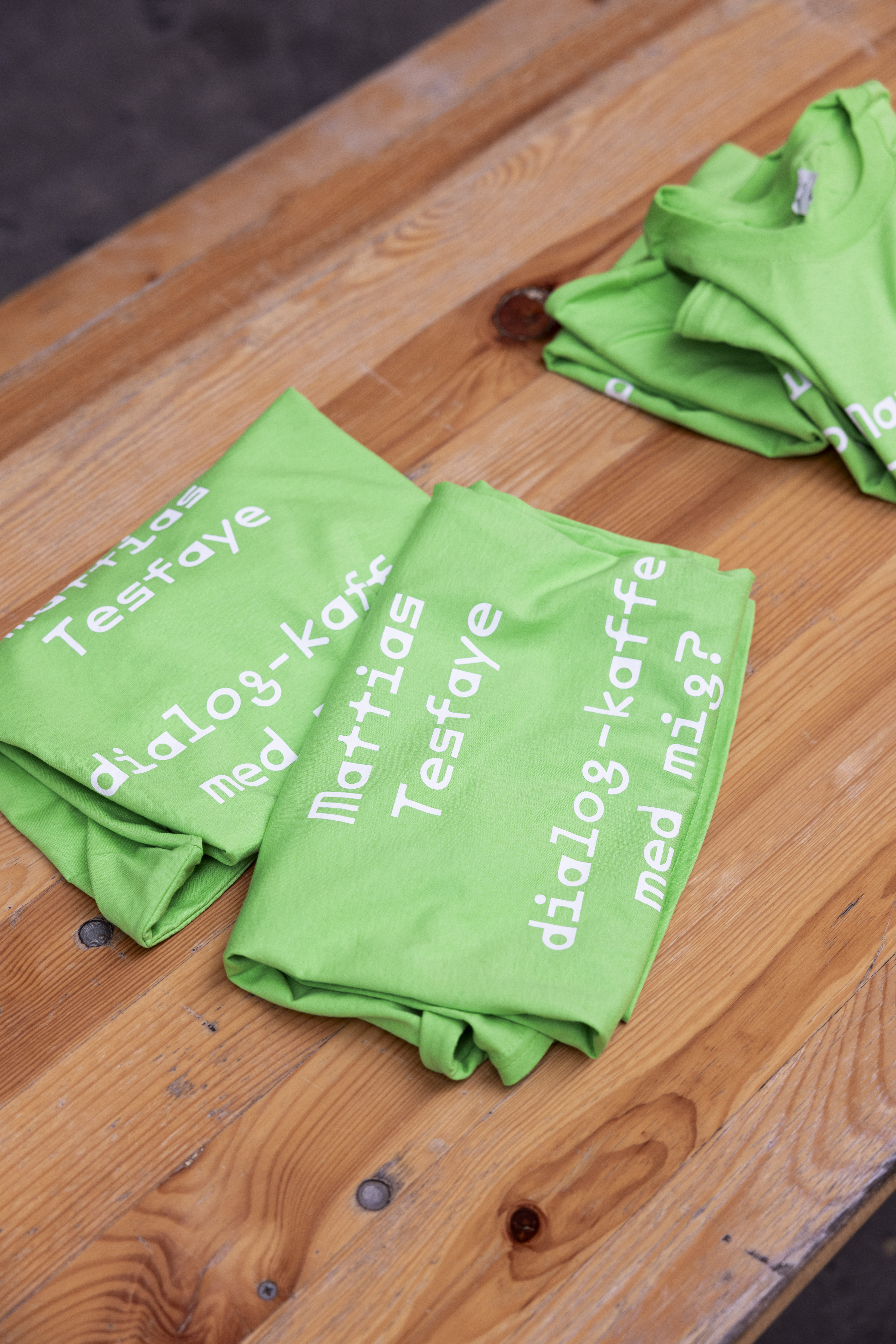

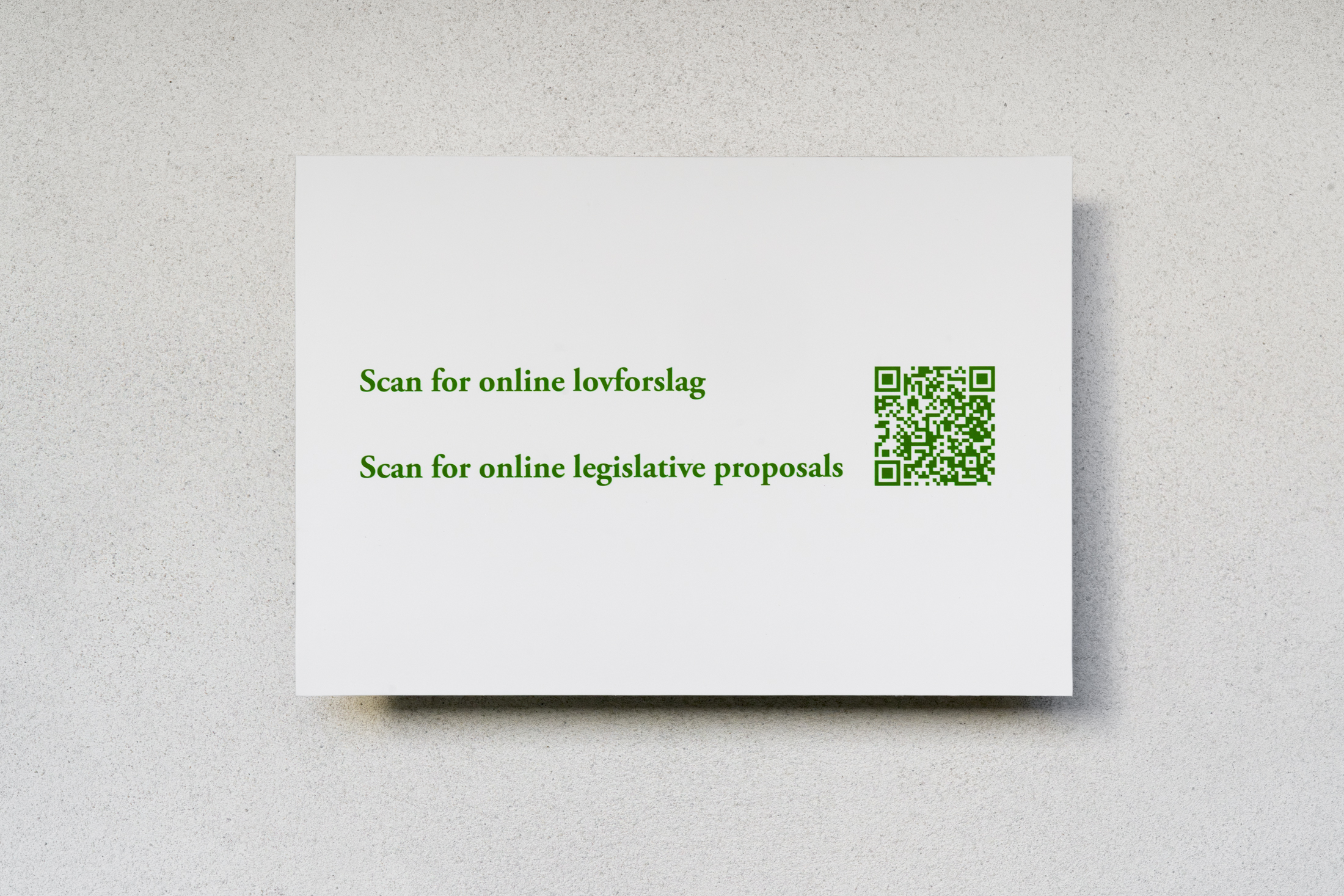
CREDITS
artist
Julie Nymann
text editor
Helle Harnisch
Ida Vestergaard Øyan
graphic designer
Kasper Aavad
translator
Ami Frost
thank you
Andrea Diermayr, Lars Bo Henriksen, Louise Rytter, Silas Emmery, Vibeke Rasmussen and all the teachers I had the pleasure of engaging with.
artist
Julie Nymann
text editor
Helle Harnisch
Ida Vestergaard Øyan
graphic designer
Kasper Aavad
translator
Ami Frost
thank you
Andrea Diermayr, Lars Bo Henriksen, Louise Rytter, Silas Emmery, Vibeke Rasmussen and all the teachers I had the pleasure of engaging with.